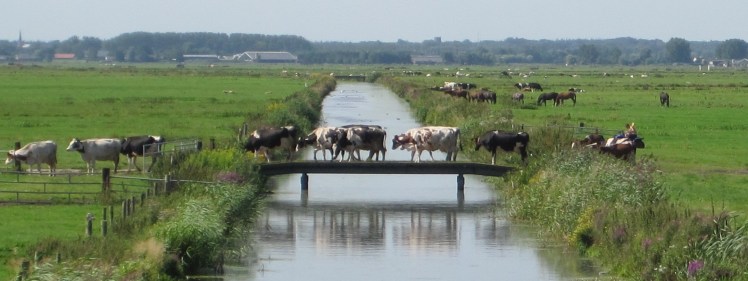This blog entry by Petra van Dam and Piet van Cruyningen introduces an important Special Issue of Environment and History just published, edited by Petra van Dam, Piet van Cruyningen and Milja van Tielhof, and entitled ‘A global comparison of pre-modern institutions for water management’. The issue’s contents may be found here, with links to full text and abstracts . Two papers and the Introduction are Open Access, so please take a look!

For generations, ever since Max Weber wrote about the relationship between major water management infrastructure and the emergence of state bureaucracies in Egypt and China, scholars have been fascinated by the relationship between water infrastructure and governance. Some authors followed Weber’s ideas and pointed out the rise of strong state bureaucracies caused by the need to maintain water management infrastructure, especially in Asian countries. In this view, the management of water infrastructure leads to authoritarian states. For Europe, however, Thomas Glick already showed that water infrastructure could also be managed in a more ‘democratic’, bottom-up way, by analysing the governance of irrigation in the Spanish huerta around Valencia. Also in the North Sea area water management in the past was organised in a more bottom-up way as Van der Linden and others argued. This caused the emergence of historiographical stereotypes: in Asia ‘Oriental Despotism’ was assumed to be predominant, whereas in Europe water management was often perceived as a cradle of democracy.

A workshop organised in The Hague in March 2015 provided an opportunity to take a fresh look at water management and forget/go beyond these old stereotypes. The workshop was organised by the research project ‘In Search of the Poldermodel: Participation and Representation in Dutch water-boards in the Pre-democratic Era’, initiated by Milja van Tielhof. This research project inquired into the political culture of water authoritiess in the Late Medieval and Early Modern Period (1400-1800) and questioned the idea – or myth – of water authorities as the origin of democracy in the Low Countries. At the workshop the results of the Dutch project were put into comparative perspective by contributions from scholars from other countries, both in the North Sea area (Belgium, France, England) and from other parts of the world (China, Egypt, Iraq, Mexico).

The work of most of the participants in the workshop was influenced by the ideas of the New Institutional Economics, which focus on the formal (laws) and informal rules (traditions, preferences, practices, norms and values) of economic behaviour. This makes it possible to compare water management organisations from different states and cultures. This institutional approach connects environmental history with recent trends in social and economic history and provides opportunities to study topics such as the interaction between water authorities and the state, or the roles played by elites such as the nobility and urban landlords.
This Special Issue of Environment and History comprises six of the presented papers. It focuses on two sets of questions. The first set concerns the political and socio-economic conditions for long-term institutional change. The relationship between water institutions and the state is examined, along with the extent to which the functioning of these institutions was dependent on socio-economic elites. The second set of questions focuses on cultural aspects of long-term institutional change. More specifically, the papers dealing with this issue, look at how the state used the codification of water institutions and formalised information-gathering on water management in decision-making; how this affected the influence of stakeholders; and how the state used the normative concept of the public interest in its dealings with water institutions and individual stakeholders. Together, the papers illustrate the great opportunities presented by taking an institutional approach to researching pre-modern water management, and the benefits of applying a comparative, global perspective. The papers show that societies in wetland areas worldwide responded to water challenges with a finely tuned mix of institutional solutions. Everywhere, water was managed by bottom-up private enterprises and voluntary cooperation at the local or regional level, combined with top-down intervention by the state. Even powerful and absolutist states had to take influential local groups and water authorities into account, as the French and Chinese examples show.

One thought on “A global comparison of pre-modern institutions for water management”